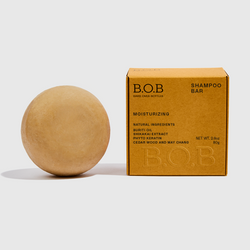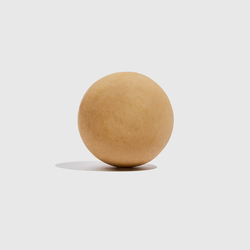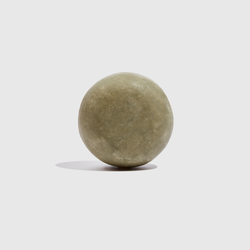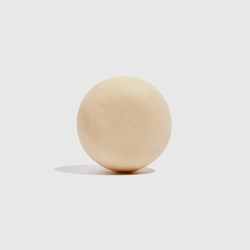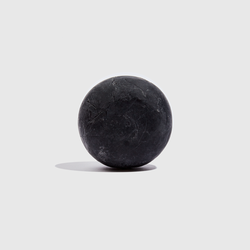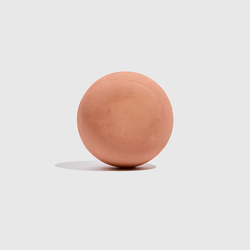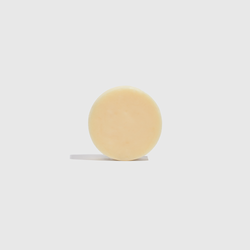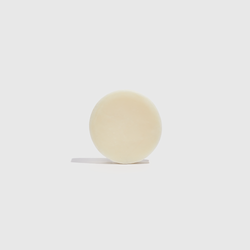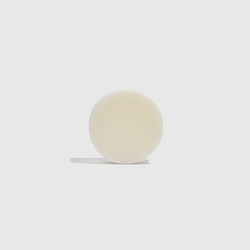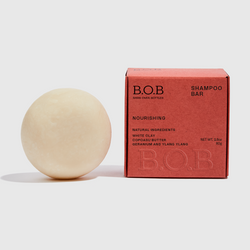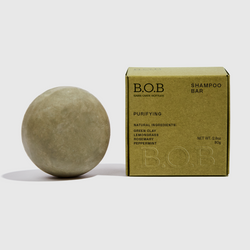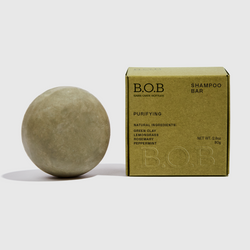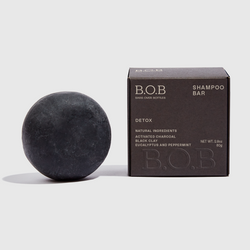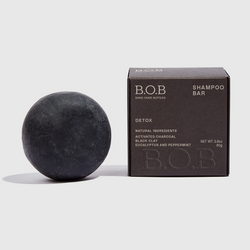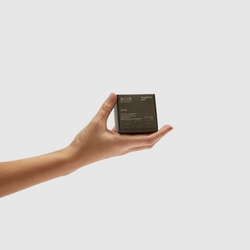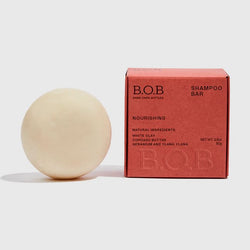Shampoo for Curly Hair: Find Out How To Use It
Index
- Types of curls
- Hair transition
- How to take care of curly hair
- Shampoo for curly hair
- Shampoo and conditioner for curly hair
- Curl Defining Bundle
Taking care of curly hair requires proper care and techniques so that your beautiful curls can reach their maximum potential and you can flaunt them everywhere. It all begins by correctly identifying your curl pattern, the ideal washing routine, and the products that are best suited for this type of hair, such as a shampoo for curly hair. Want to find out more? Keep reading!
Types of curls
Even though they’re similar, not all curls are the same, and it’s important to understand this to recognize what your curl pattern is.
You may not know this, but there is a hair categorization that defines the different types of hair: it breaks down hair by types, and goes from 1 (straight hair) to 4 (curly hair).
Type 2 hair is the one we call wavy, and even within this category there are three subdivisions: 2A, 2B, and 2C, depending on the wave pattern.
Similarly, type 3 hair is called curly, and it also has variations 3A, 3B, and 3C. Lastly, coily hair is classified as number 4 and it also breaks down into 4A, 4B, and 4C.
Let's understand the main differences between them and how they impact the formation of curls.

Wavy hair
Wavy hair is type 2 and comes right after straight hair in the classification chart. It usually has soft, S-shaped curves, and it’s not uncommon to hear most women who have wavy hair complaining that their hair is “neither straight nor curly.”
This happens especially with wavy hair type 2A since the waves are almost imperceptible and appear more at the ends. Wavy hair type 2B has more defined curves that begin from the middle of the length to the ends, and type 2C gets confused with curly hair type 3A, with waves that start at the root and continue to the ends.

Curly hair
Curly hair fits into type 3, being that subcategory 3A is the one that has softer and stretched curls, which may be confused with hair type 2C. Curl type 3B has more well-defined, medium-size spirals, and type 3C has tighter and more accentuated curls that resemble springs.
In practice, curly hair tends to have slightly drier ends, because the oil from the roots encounters some difficulty in getting down to the ends, due to the curves along the way. It’s also common for curly hair to have a little more frizz than other hair types.

Coily hair
Coily hair accounts for hair type number 4, and is also divided into three subtypes – A, B, and C –, but tends to have less definition and is drier and more fragile than curly, wavy, and straight hair.
In coily hair, the curls are very tight, and create a ring format, which makes it harder to recognize the curls and can make it very difficult for the natural oil from the root to run through its entire length.
Due to this, coily hair is more prone to dryness and breakage, so it’s a must to include hydration in your hair care routine.

Hair transition
Lots of women are starting to accept the natural characteristics of their hair (whether wavy, curly, or coily), and are thus putting a stop to the use of chemicals and treatments, such as straightening, aimed at changing their hair’s composition. The process of people letting their natural hair texture grow out has a name: hair transition.
The thing is, this period in which the hair starts to take on its natural texture is very challenging, because throughout the transition the hair will be multi-textured: While it grows out, the hair closer to the root will be in its natural texture, and may be wavy or curly, for example, but the rest of the strand – until the ends – is still under chemical transformation. So, as the hair grows, it ends up having different textures and this can become a problem for those people who seek a more homogeneous look.
Without being totally straight or curly, this multi-texture hair is more difficult to manage and style. This makes a lot of women feel bad about their appearance, which leads to lower self-esteem. That’s why so many people end up opting for the so-called “Big Chop:” a radical cut that tries to get rid of the chunk of hair that still has traces of chemical treatment and keep only the natural part of the hair – a more daring option that many don’t want to try.

How to take care of curly hair
So, we learned that each hair type requires special care, and with curly hair, whether wavy, curly, or coily, it's no different. In general, one of the main concerns with this type of hair concerns moisture, which can be naturally more difficult to achieve and requires extra attention.
The shape of the curls – be it waves, springs, or tight rings – may make it more difficult to distribute the scalp’s natural oils from roots to ends (especially from the middle to the ends). This is because it’s harder for the natural oils to coat strands from roots to ends because of the curls.
When our hair becomes dry, what we dread becomes a reality: Our hair looks dull and as if we don’t take care of it. How can you avoid this? By taking care of your curls the right way! Here are some tips:
- Less washes: Unlike straight hair, curly hair suffers less from excessive oiliness. So, you can opt for less weekly washes to keep it clean, without drying out. Two to three times a week should be enough.
- Shampoo the roots only: Since your hair doesn’t receive the same amount of oil, only apply the product on your scalp. As you massage the area, the foam that runs down the length of your hair does the job of cleaning it.
- Hydrate your hair: It may be an interesting choice to apply masks or conditioners to ensure a more uniform hydration, but only on the length of your hair, not on the roots. This way you balance the nutrients from the scalp and the lengths.
- Use shampoo specific for curly hair: Since curly hair has its own particularities, using the right product is important to provide the necessary nutrition, cleanse without drying, and still help achieve the ideal look. There are many options on the market, and you can research to know what the best shampoo is for your curls.

Shampoo for curly hair
One of the best ways to offer your curls the ideal treatment is to use a shampoo for curly hair. This product is specifically developed to offer all the hydration that curls need, and it even does more, like increases moisture, cleans, helps with hair growth, nourishes, and even controls frizz.
Shampoo for curly hair also helps define curls, therefore highlighting this feature. There are plenty of different shampoos for curly hair on the market, and each formulation considers a different hair type, from wavy to curly, and even coily hair.
It’s important that you identify what your hair type is and look for the product that best suits your hair: Coily and curly hair may need more moisturizing and nourishing formulas, since they suffer more from dryness and breakage, while wavy hair may do well with lighter shampoos.
Shampoo and conditioner for curly hair
The use of a shampoo for curly hair together with a proper conditioner further enhances the effects of care and aesthetics that curls need. As a result, many brands have developed products that aim to offer complete solutions for people who want to give their curls the best treatment.
For example, I recently introduced its Curl Defining Bundle, composed of a Moisturizing Shampoo, perfect for curly hair, and a Styling Conditioner, which provides the desired final touch. It brings out the hair’s curl pattern.
Curl Defining Bundle
My Curl Defining Bundle is a complete and natural solution for curly hair. With the combined action of Buriti and Pracaxi oils, the Moisturizing Shampoo cleanses the scalp and, at the same time, boosts hydration of the strands, which remain healthy and nourished from root to ends. The Murumuru Butter complements the hydration and helps reduce frizz and split ends.

The Curl Definer & Leave-In Conditioner is a 2-in-1 formula that can be used during and after showering, as a conditioner and leave-in. The Vegetal Keratin and Mango Butter in its composition revitalize dry hair and regulate volume, thus defining curls and getting rid of frizz. These ingredients, which are already super moisturizing, fuse with the Pracaxi and Buriti Oil from the Moisturizing Shampoo and offer even more moisture to the curls, making them shine more.
In addition to these incredible natural ingredients, my Curl Defining Bundle also has other unique features that offer extra care for your hair and the Planet: like all of my other products, the Moisturizing Shampoo and the Curl Definer & Leave-In Conditioner are solid products (bars) and this makes all the difference, since they avoid the use of plastic packaging, preserve water in their production process and last longer.
I offer much more sustainability to your curly hair care routine: These products are vegan, recyclable, cruelty-free, biodegradable, and plastic-free. In fact, by using my Curl Defining Bundle you replace up to 5 plastic bottles of other liquid shampoos and conditioners!
Your curls and the Planet deserve all the attention possible: Take care of them with love by using my products!


